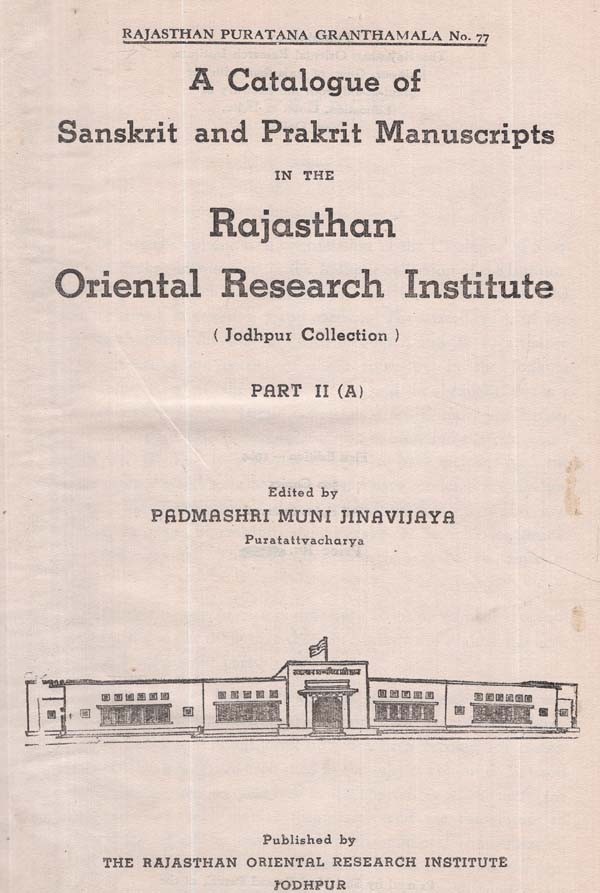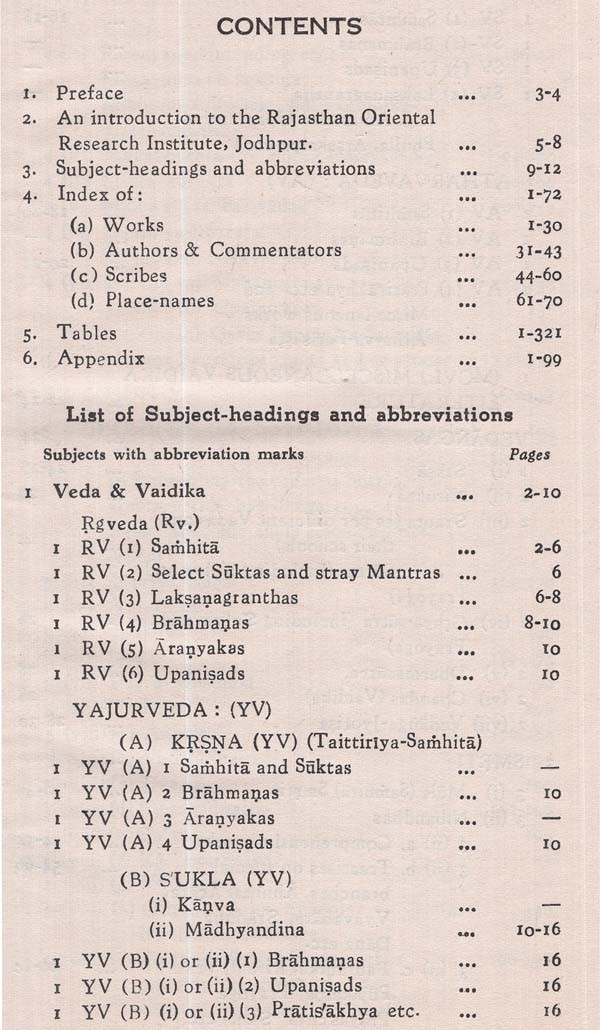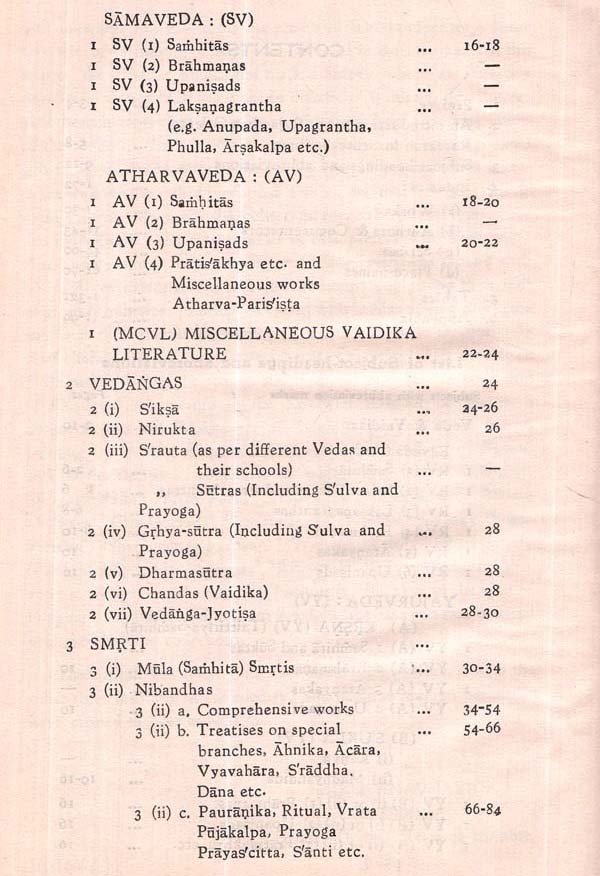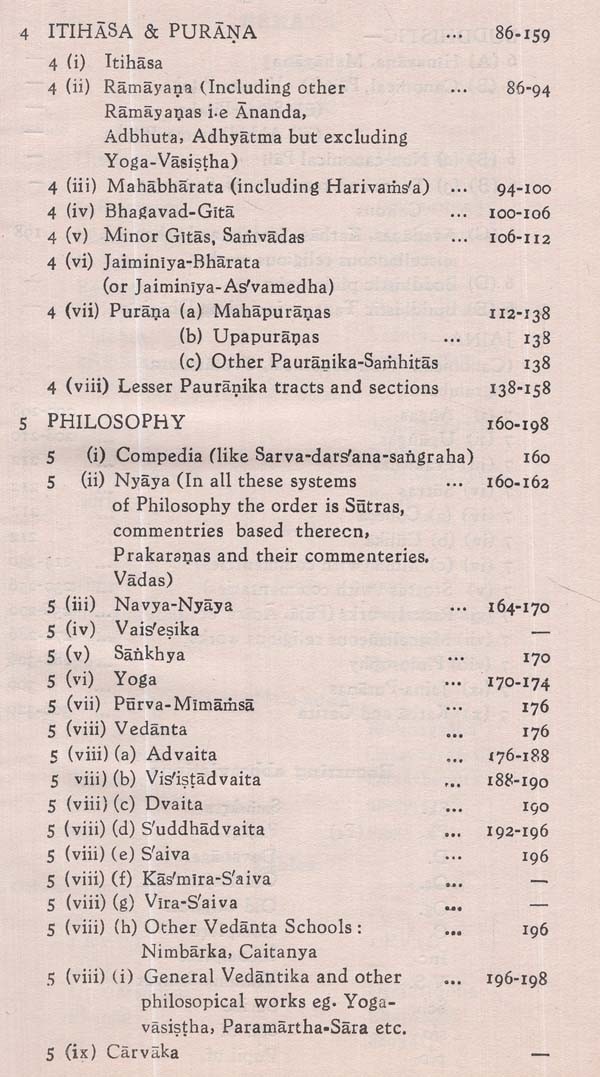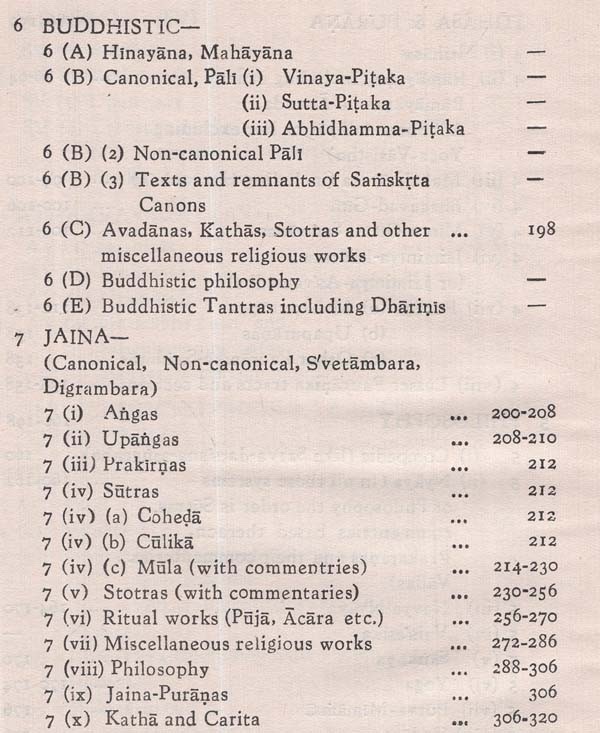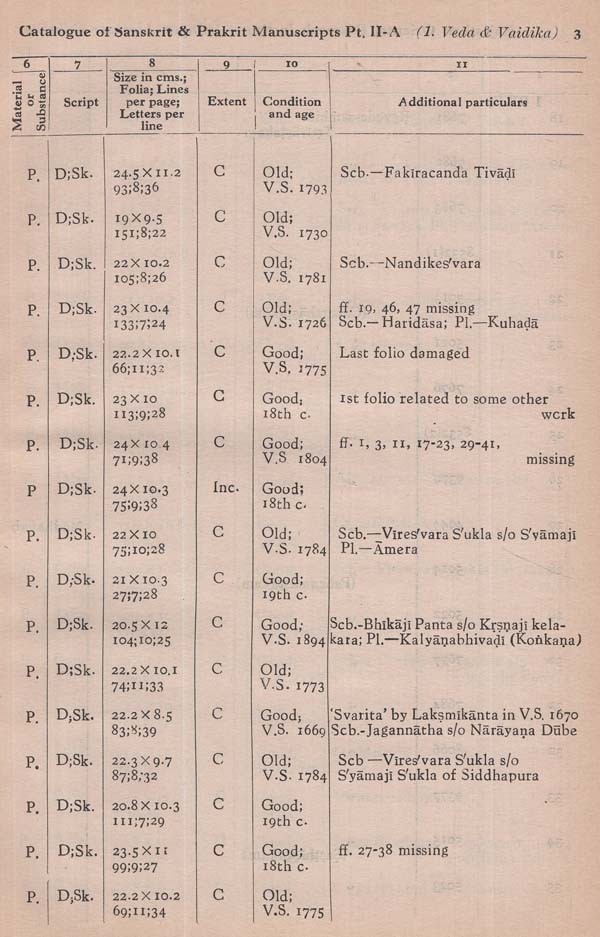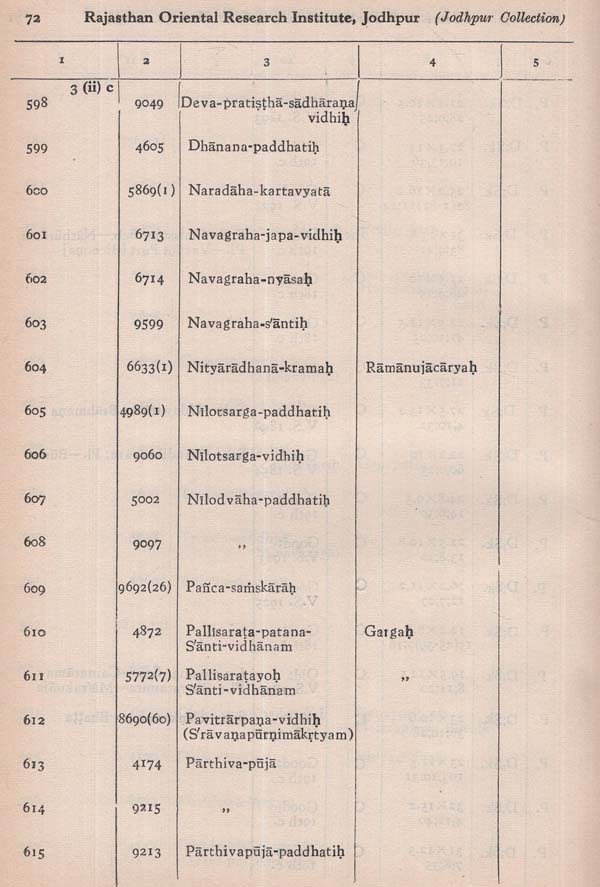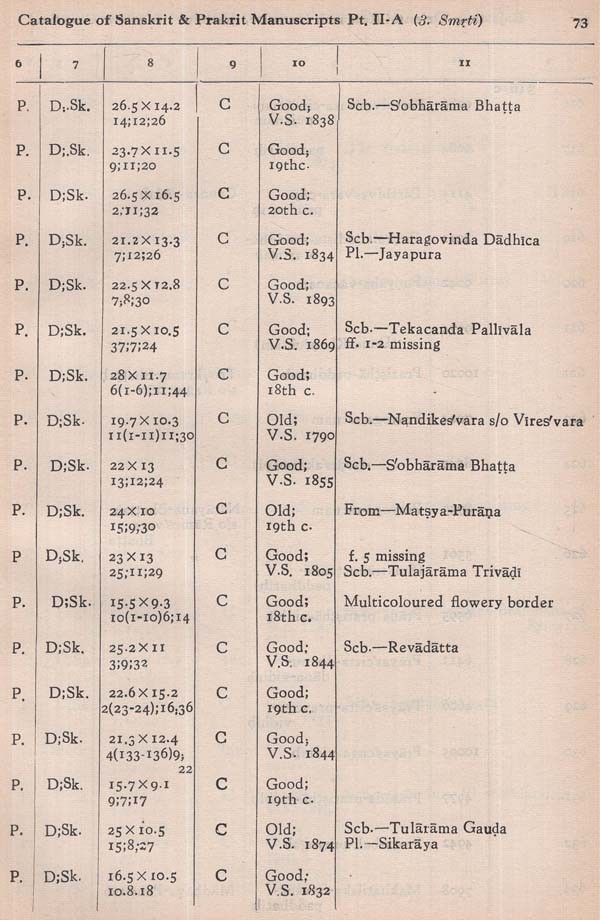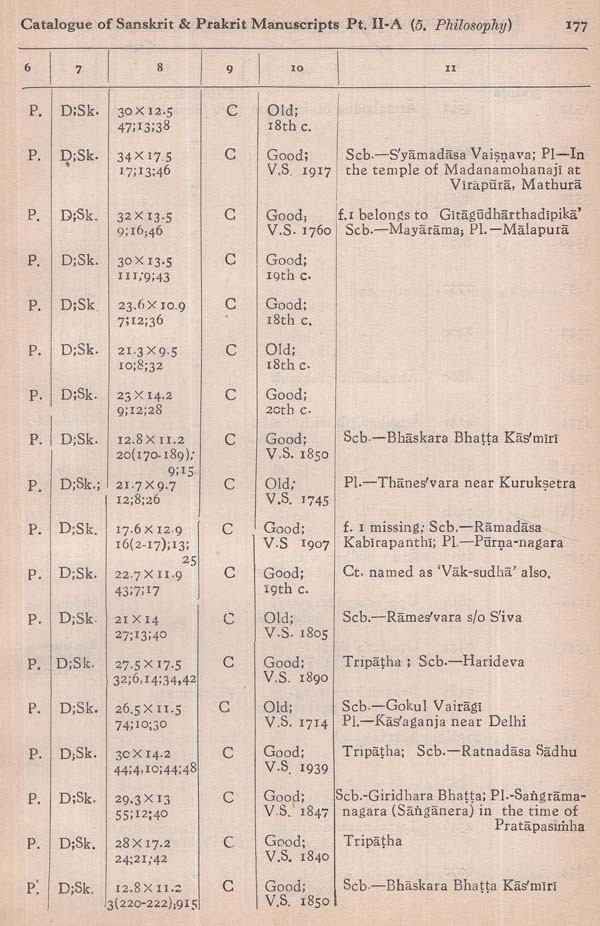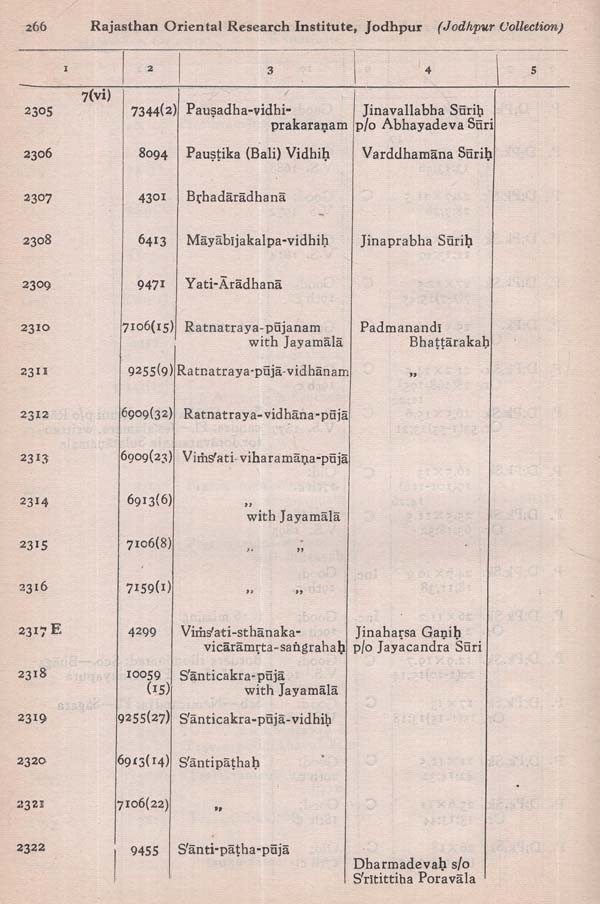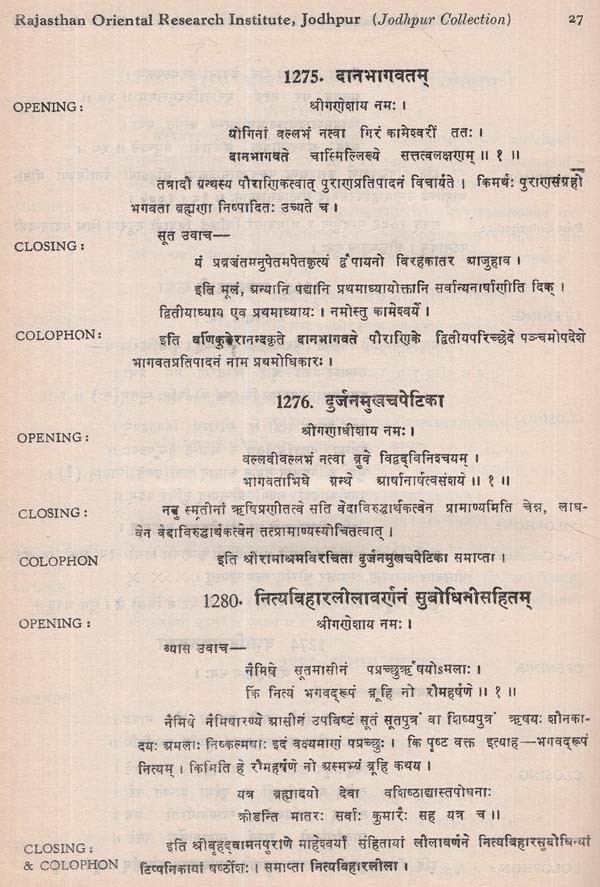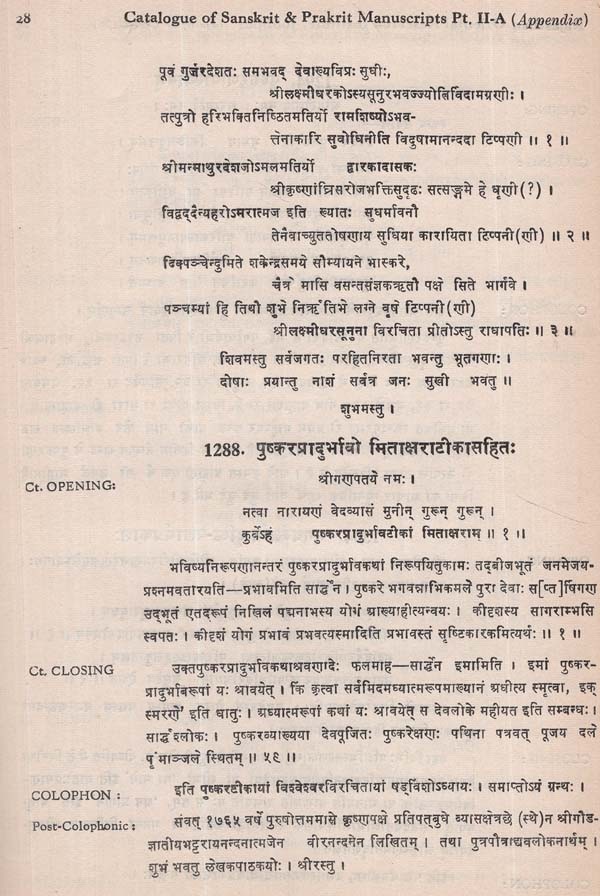
A Catalogue of Sanskrit and Prakrit Manuscripts (An Old and Rare Book)
Book Specification
| Item Code: | UAA465 |
| Author: | Padmashri Muni Jinavijaya |
| Publisher: | Rajasthan Oriental Research Institute, Jodhpur |
| Language: | English |
| Edition: | 1964 |
| Pages: | 507 |
| Cover: | HARDCOVER |
| Other Details | 10.00 X 7.00 inches |
| Weight | 720 gm |
Book Description
The present volume is in continuation of the Catalogue of Sanskrit and Prakrit manuscripts in the Jodhpur collection of the Institute, the first part of which has already come out in the year 1963. This s-ear we aimed at covering 7,500 entries. The second part of the catalogue has been divided into two sections A and B, so arranged as to embrace 5,900 entries of the manuscripts in the Jodhpur collection. Rest of the 1,600 entries will he brought out in a separate volume for the Jaipur collection which is under publication. The present part (11-A) comprises 2,792 entries, and the rest would go in Pt. (II-B). It was not possible to have included both the sections into a single voluthe, as it would have rendered it quite un-wieldy. Part II-A contains details of manuscripts on Vedas and Vaidika, Vedangas, Smriti, Itihasa and Purana, Philosophy, Buddhistic and Jaina subjects. The remaining subjects will be contained in Vol. II-B.
Thus, cataloguing of manuscripts upto accession number 10,100, excluding the works other than those in Sanskrit and Prakrit, has been completed in both the parts.
The manuscripts have been classified in accordance with the instructions laid down by the Ministry of Education, New Delhi. Abbreviations of subject-headings have, however, been formed for convenience and the same have been used in the subject coloumn. Extracts from important manuscripts given in the appendices will be useful for comparing them with similar manuscripts and are thus meant to supply a lot of information regarding the authors, commentators, scribes and the places and circumstances that led them yield the pen. A separate coloumn for additional particulars carries the notices still further.
An index containing alphabetical lists of works, authors, commentators, scribes and place-names, has also been affixed for easy reference as has been done in Pt. I.
All possible care has been taken in compiling and editing the catalogue according to the instructions received from the Ministry of Education, Govt. of India. Still, it is possible that certain mistakes might have crept in. I request the scholars to set them right while using this catalogue.
We express our gratitude to the Ministry of Education who have so kindly sanctioned the grant to compile and publish the volume. My thanks are again due to Shri Gopal Narayan Bahura, M.A., Dy. Director of the Institute and Shri Laxmi Narayan Goswami, Cataloguing Asstt. for the pains they have taken in bringing out the work with due care, interest and zeal which was expected from them. Mention has also to be made of Shri Hari Prasad Pareek who did his best for a careful printing of the catalogue.
The Government of Rajasthan established the Rajasthan Oriental Research Institute in the year 1951 with the following aims and objects:-
I. to explore and bring to light the ancient literature of Rajasthan and adjacent areas as available in Sanskrit, Prakrit, Apabhramsa, Rajasthani, Gujarati, Vraj, Hindi and other regional languages,
2. to collect, preserve, compile, and carry out survey of original source-material of ancient history and culture of Rajasthan i.e. architecture, paintings, arts, inscriptions, copper-plates, coins and documents etc.,
3. to collect old manuscripts and prepare their pen-copies, microfilmed and photostat copies and sound records etc.,
4. to organise a well equipped reference library of books use-ful and indispensable for research work in the field of Indology and
5. to investigate, record, interpret and present clearly
(i) the varied folk-literature throwing light on public life in Rajasthan,
(ii) devotional and canonical literature embodied in the lyrics of various religious sects and
(iii) all sorts of material related to the social, cultural and religious customs and secular practices.
When independence came to India an opening was provided in its wake for the preservation of a truly great heritage. The task was not an ordinary one and, howsoever limited in resources, the Institute has, within a short span of 15 years, collected and preserved about 83,000 manuscripts, written in Sanskrit, Prakrit, Apabhramsa, Hindi, Old Rajasthani and Vraj etc. They deal with a variety of subjects including works on the Vedas, Brahmanas, Upanishads, Vedanta, Philosophy, Astrology, Logic, Grammar, Mimamsa, Nataka, Champu, Classical metres, Ka tha, Akhyayika, Kamasutra, Ayurveda, History etc. etc. Some of them are very rare dating back to the IIth C. Some of these manuscripts are of exceptional exhibitory value being extensively illustrated representing certain broad characteristics of the various Rajput Schools of painting that flourished in the ancient and medieval times. Large amount, skill, time and patience would be required to bring out descriptive catalogues and reproductions of these illustrated works.
There is a reference library also, containing about t 11000 rare and valuable volumes on various subjects. Equal attention is paid to the closely allied aspects of preservation and publication. Under the series styled as "Rajasthan Puratana Granthmala" the Institute has so far published 7o works and a good many are under print. These works have been highly appreciated by eminent scholars in the country and abroad in that they make a definite advance in the exploring of hitherto unknown material. Lately, a scheme for the preservation and publication of important manuscripts in the Jain Grantha Bhandars at Jaisalmer was taken up by the Institure.
The late President and the late Prime Minister both, after visiting Jaisaimer, had expressed their wishes for the preservation and proper study of these manuscripts. Consequently, the Government of Rajasthan took up the task through the Rajasthan Oriental Research Institute. In these Bhandars some of the manuscripts on paper belong even to the 12th and 13th centuries. A good number of palm-leaf manuscripts belonging to still earlier centuries is the main attraction of this treasure.
In antiquity they perhaps surpass all similar collections in India, and it is said that we have at present only a remnant of what was at one time a still more splendid collection. The first European to have taken notice of these Bhandars was Col. James Tod-the pioneer annalist of Rajasthan. Dr. Buhler and Dr. Jacobi, afterwards, examined, took notices of and copied out certain important manuscripts of these Bhandars. After a long gap of time, work on these manuscripts has been resumed by this Institute. Photo-stat copies of 258 manuscripts comprising 336 works in 27,297 leaves and 7,862 plates have been prepared and preserved.
Publication of certain rare manuscripts available in these Bhandars, such as-a complete copy of Bhatta Somesvara's commentary on the 'Kavya Prakasha' of Mammata, a work written on palm-leaf and dated 1158 A. D., not much later after the date of composition of the 'Kavya Prakash', between ioso-t ioo A.D., the 'Cakrapani.vijaya Maha-kavya' by Laxmidhara Bhatt, the 'Shabdaratnapradipa', 'Karakasambandhodyota', 'Balsiksha Vyakarana' by Thakkur Sangram Singh and the `Vrittajatisamuchchaya' of Virahank, 'Kavidarpana', 'Padartharatnamanjusa' and `Tripura Bharati Laghustava Tika' etc., goes to the credit of the Institute. The 'Cakrapani - vijaya - mahakavya' is the only palm-leaf copy of the work available now. It is a love-tale.
The `Shabdaratnapradipa, as the title suggests, is a work of lexical character containing several works that yield more than one meaning. The `Karkasambandhodyota' is a monograph on the Katantra school of Sanskrit grammar. The `Vrittajatisamuchchaya' is a work on Prakrit and Sanskrit metres, written by Virahank about the 7th century A.D. The `Kavidarpana' represents an invaluable phase in the history of middle Indo-Aryan prosodical tradition. Composed about the i4th century A.D. the 'Padartha-ratna-manjusa' of Krishna Bhatta is an important manual of the Vaisheika school of Philosophy. The 'Tripura Bharati Laghustava' is a devotional poem by Laghuacharya dedicated to Goddess Tripura. Vasavadatta', the wellknown love-story in elegant Sanskrit prose by Subandhu. Its printing is almost complete. Many other similar works from the Jaisalmer collection are also under publication, which are pledged to add a lot to our information about the medieval Sanskrit, Prakrit and allied literature.
One of the latest undertakings of the Institute is the scheme for the survey of manuscripts, paintings and other art objects that are lying scattered all over Rajasthan.
**Content and Sample Pages**
